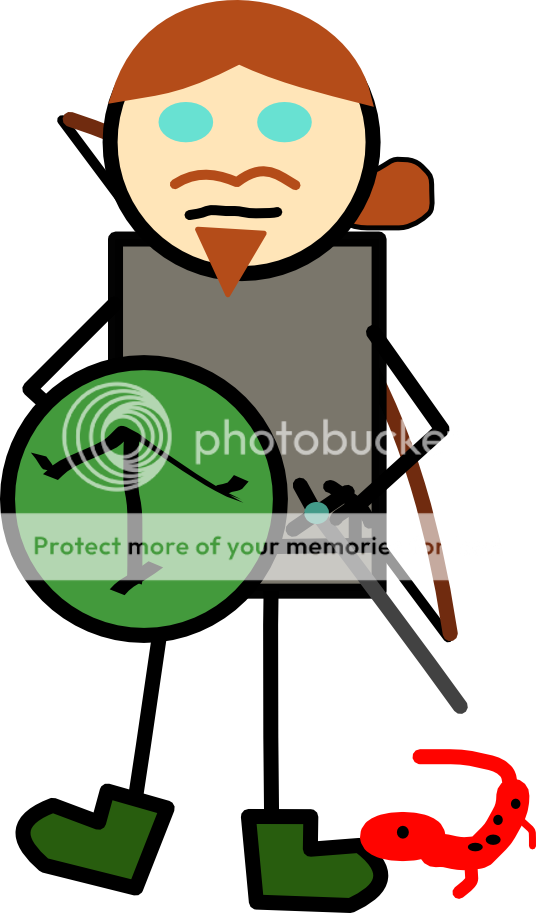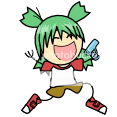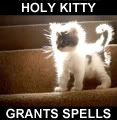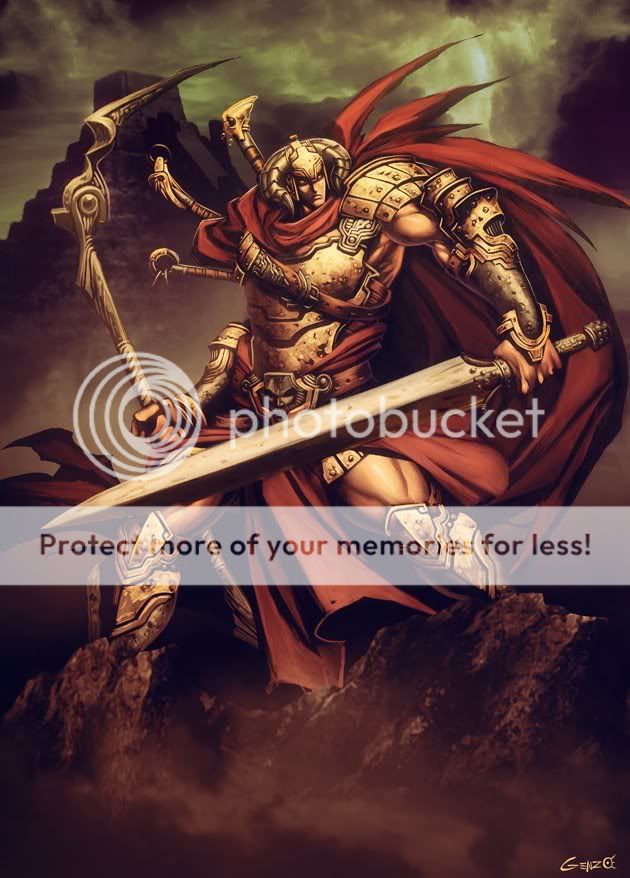Results 1 to 30 of 201
Thread: Minor 4e Change:
-
2008-02-04, 05:49 PM (ISO 8601)Banned


- Join Date
- Oct 2007
- Gender

 Minor 4e Change:
Minor 4e Change:
Whoo! People die at something lower then -10.
Not sure if I like the d20 roll at the bottom, but.. I definitely like expanding the window to be something you can reasonably hit past level like, 5.
-
2008-02-04, 06:04 PM (ISO 8601)Barbarian in the Playground


- Join Date
- Apr 2007
 Re: Minor 4e Change:
Re: Minor 4e Change:
One wonders what the "clever abstractions" of the bleeding out mechanic refer to.
Hmm, wonder if you just plain bleed faster if you have more hitpoints... Maybe if you're higher level? How exactly are they going to go about it in order to speed it up?
Perhaps there's just a certain number of rounds of negative hitpoint status that you have to get stable in before you're dead...001100010010011110100001101101110011
-
2008-02-04, 06:06 PM (ISO 8601)Orc in the Playground


- Join Date
- Sep 2007
- Location
- Northern IL
- Gender

-
2008-02-04, 06:07 PM (ISO 8601)Halfling in the Playground


- Join Date
- Sep 2007
 Re: Minor 4e Change:
Re: Minor 4e Change:
Can someone spolier it for those of us at work.
Thanks
-
2008-02-04, 06:07 PM (ISO 8601)Dwarf in the Playground


- Join Date
- Dec 2007
 Re: Minor 4e Change:
Re: Minor 4e Change:
This is the first 4e change I can say I wholeheartedly agree with. And, best of all, I can easily rip it for me 3e campaign!
-
2008-02-04, 06:09 PM (ISO 8601)Ogre in the Playground


- Join Date
- Feb 2007
- Location
- Easton, PA
- Gender

 Re: Minor 4e Change:
Re: Minor 4e Change:
Article for your convience:
SpoilerCharacter death is one of the ultimate threats in any RPG, and D&D is no exception. Besides the obvious, um, “inconveniences” that death might cause your character and his allies in both the short and long term—inconveniences which vary based on your level, the current situation, and of course your attachment to that particular character—death is a mark of failure. In some hard-to-explain but very real way, a dead character symbolizes that you just “lost” at D&D. That can prove a bitter pill for many players, and in my experience is even more frustrating than paying for a resurrection.
What We Hated
Early in the design process, Rob, James, and I identified a number of ways that we were unsatisified with D&D’s current death and dying rules. For example, we strongly disliked the inability of 3rd Edition D&D’s negative-hit-point model to deal with combat at higher levels—once the monsters are reliably dealing 15 or 20 points of damage with each attack, the chance of a character going straight from “alive and kicking” to “time to go through his pockets for loose change” was exceedingly high; effectively, the -1 to -9 “dying” range was meaningless. Ask any high-level fighter whether he’d prefer the second-to-last attack from a monster to leave him at 1 hp or -1 hp; I’d put odds on unconsciousness, and how lame is that?
Among other problems, this also meant that characters effectively had no way to “lose” a combat except by being killed. This removes a lot of dramatic possibilities for the story—for instance, the classic scene of the characters being captured and thrown in a cell from which they have to escape using only their wits and a pack of chewing gum (or whatever).
On top of all that, the game added a complex state of being at exactly 0 hp, which wasn’t quite like being fully capable but also wasn’t quite dying. Honestly, though, how often does any character actually get reduced to exactly 0 hp? Why did the game need a condition that existed at exactly one spot on the big, broad range of hit point possibilities?
What We Wanted
We wanted a death and dying system that added fun and tension at the table, scaled well to any level of play, and created the threat of PC mortality (without delivering on that threat as often as 3rd Edition did).
Characters had to feel that death was a possibility in order for combat to feel meaningful. If it seems impossible to be killed, much of the tension of combat disappears. However, if the majority of combats result in death (as is the case for a lot of high-level play in previous editions), the game is forced to reclassify death as a trivial obstacle in order to remain playable. 3rd Edition accomplished this with popular spells such as close wounds, delay death, and revivify—mandatory staples of any high-level cleric’s arsenal due purely to the commonality of death. But that removes the tension, and now what’s the point of death at all?
The system also had to be simple to remember and adjudicate at the table. Being able to keep the rule in your head is important, because you don’t want to be bogging the game down flipping through a book when a character is clinging to life by a thread—that should be high-tension time, not slowdown time!
Finally, it had to be believable within the heroic-fantasy milieu of D&D. (Believability isn’t the same thing as realism—an error which has ruined more games than I can count.) Put another way, it had to feel like D&D—one of those tricky “you know it when you see it” things.
What We Did About It
Back in 2005, this was obviously a much lower priority than, say, creating the new model for how classes and races worked, so we put it on the back burner to simmer. As the months passed, we and other designers proposed various models that tried to solve the conundrums set out above, varying from exceedingly abstract to witheringly simulationist. We playtested every model, from death tracks to life points, each time learning something different about what worked or didn’t work. A few times, we even temporarily settled on a solution, claiming that the playtesters only needed time to get used to our radical new ideas.
Thankfully, our awakening came well before we released the game (or even before widescale playtesting began, for that matter). Despite some quite elegant concepts, none of our radical new ideas met all the criteria necessary, including simplicity, playability, fun, and believability.
The system had to be at least as simple to remember and at least as easy to play as what already existed. For all their other flaws, negative hit points are pretty easy to use, and they work well with the existing hit-point system.
It had to be at least as much fun as what already existed, and it had to be at least as believable as what already existed. In ideal situations, negative hit points create fun tension at the table, and they’re reasonably believable, at least within the heroic fantasy milieu of D&D, where characters are supposed to get the stuffing beaten out of them on a regular basis without serious consequences.
Every one of our new ideas failed to meet at least one of those criteria. Maybe they were playable but too abstract to feel fun or believable, or they were believable but too complicated to remember. Nothing worked, and I admit we experienced a couple of freak-out moments behind closed doors.
Side note to all those would-be game designers out there: When you hear yourself making that claim, you might be in danger of losing touch with reality. Sometimes you’re right, and your innovative game design concept just needs a little time to sink in. (The cycling initiative system used by 3rd Edition D&D is a good example of that—back in 1999, some very vociferous playtesters were convinced that it would ruin D&D combat forever. Turned out that wasn’t exactly true.) But every time you convince yourself that you know better than the people playing your game, you’re opening the possibility of a very rude (and costly) awakening.
The Breakthrough
Eventually we got it through our heads that there wasn’t a radical new game mechanic just waiting to be discovered that would revolutionize the narrow window between life and death in D&D. What we really needed to do was just widen the window, reframe it, and maybe put in an extra pane for insulation. (OK, that analogy went off the tracks, but its heart was in the right place.)
Characters still use a negative hit point threshold to determine when they move from “unconscious and dying” to “all-the-way-dead,” but now that threshold scales with their level (or more specifically, with their hit point total). A character with 30 hit points (such as a low-level cleric) dies when he reaches -15 hit points, while the 15th-level fighter with 120 hp isn’t killed until he’s reduced to -60 hit points.
That may seem like an unreachable number, but it’s important to remember that monsters, like characters, aren’t piling on as many attacks on their turn as in 3rd Edition. At 15th level, that fighter might face a tough brute capable of dishing out 25 or 30 points of damage with its best attack… or nearly twice that on a crit. The threat of “alive-to-negative-everything” on a single hit remains in play, but it’s much less common than in the previous edition. That puts that bit of tension back where it belongs.
The new system also retains the “unconscious character bleeding out” concept, but for obvious reasons speeds it along a bit. (There’s not really any tension watching that 15th-level fighter bleed out at a rate of 1 hp per round for 30 or 40 rounds.) Thanks to some clever abstractions, the new system also removes the predictability of the current death timer. (“OK, Regdar’s at -2 hp, so we have 8 rounds to get to him. Yawn… time for a nap.”)
It’s also less costly to bring dying characters back into the fight now—there’s no “negative hit point tax” that you have to pay out of the healing delivered by your cure serious wounds prayer. That helps ensure that a character who was healed from unconsciousness isn’t in an immediate threat of going right back there (and you’ll never again have the “I fed Jozan a potion of healing but he’s still at negative hit points” disappointment).
Monsters don’t need or use this system unless the DM has special reason to do so. A monster at 0 hp is dead, and you don’t have to worry about wandering around the battlefield stabbing all your unconscious foes. (I’m sure my table isn’t the only place that happens.) We’ve talked elsewhere about some of the bogus parallelism that can lead to bad game design—such as all monsters having to follow character creation rules, even though they’re supposed to be foes to kill, not player characters—this is just another example of the game escaping that trap. Sure, a DM can decide for dramatic reasons that a notable NPC or monster might linger on after being defeated. Maybe a dying enemy survives to deliver a final warning or curse before expiring, or at the end of a fight the PCs discover a bloody trail leading away from where the evil warlock fell, but those will be significant, story-based exceptions to the norm.
Oh, and speaking of zero hit points? You’re unconscious and dying, just like every new player expects it should be. It’s not as harsh as the “dead at 0 hp” rule of the original D&D game, but it’s still not a place you want to be for long!
Try It Now!
If you want to try out a version of this system in your current game, try the following house rule. It’s not quite the 4th Edition system, but it should give you an idea of how it’ll feel.
1) At 0 hp or less, you fall unconscious and are dying.
Any damage dealt to a dying character is applied normally, and might kill him if it reduces his hit points far enough (see #2).
2) Characters die when their negative hit point total reaches -10 or one-quarter of their full normal hit points, whichever is a larger value.
This is less than a 4th Edition character would have, but each monster attack is dealing a smaller fraction of the character’s total hit points, so it should be reasonable. If it feels too small, increase it to one-third full normal hit points and try again.
3) If you’re dying at the end of your turn, roll 1d20.
Lower than 10: You get worse. If you get this result three times before you are healed or stabilized (as per the Heal skill), you die.
10-19: No change.
20: You get better! You wake up with hit points equal to one-quarter your full normal hit points.
4) If a character with negative hit points receives healing, he returns to 0 hp before any healing is applied.
In other words, he’ll wake up again with hit points equal to the healing provided by the effect—a cure light wounds spell for 7 hp will bring any dying character back to 7 hp, no matter what his negative hit point total had reached.)
5) A dying character who’s been stabilized (via the Heal skill) doesn’t roll a d20 at the end of his turn unless he takes more damage.
Looks pretty solid, but I have no more response than: about time.
-
2008-02-04, 06:11 PM (ISO 8601)Ogre in the Playground


- Join Date
- Aug 2006
- Location
- Albany, NY
- Gender

 Re: Minor 4e Change:
Re: Minor 4e Change:
Must say, I don't really like it but I'm aware that I'll be in the minority here.
Why don't I like it? Two reasons:
1. I prefer standard mechanics whenever possible. I.E. everyone dies a -10 is simpler than everyone dies at total -hp/4 if total -hp/4 < 10 unless your HP < -10 and you roll less than 10 on a d20 three times in a row. Also, because the critical number for death scales with level, I can see folks going "oh wait, I'm not dead! I leveled last session!" two rounds after they bit it.
2. This looks to me like it makes it harder for a character to die, rather than just be knocked out. I prefer my games a bit grittier, where death is a real possibility for those in the monster slaying profession.[CENTER]So You Wanna Be A DM? A Potentially Helpful Guide
Truly wonderful avatar made by Cuthalion
-
2008-02-04, 06:22 PM (ISO 8601)Bugbear in the Playground


- Join Date
- Mar 2006
- Location
- Romancing the Windy City
- Gender

 Re: Minor 4e Change:
Re: Minor 4e Change:
Understandable. Then again, are all characters cut from the same cloth? In the same way that different characters can take different amounts of punishment before being seriously hurt, wouldn't it follow that there would be a similar difference when it came to kicking the bucket?
Yotsubatar by Dr. Bath
-
2008-02-04, 06:27 PM (ISO 8601)Orc in the Playground


- Join Date
- Sep 2007
- Location
- Northern IL
- Gender

 Re: Minor 4e Change:
Re: Minor 4e Change:
Those are fair concerns, but I really don't see the math being a big deal on this one. Especially in the context of having fewer attacks to deal with in combat, taking a few seconds when you go below 0HP to figure out what half your max hp is doesn't seem like that big of deal.
-
2008-02-04, 06:28 PM (ISO 8601)Dwarf in the Playground


- Join Date
- Dec 2007
-
2008-02-04, 06:28 PM (ISO 8601)Troll in the Playground


- Join Date
- Apr 2007
- Gender

 Re: Minor 4e Change:
Re: Minor 4e Change:
All I can think of is Final Fantasy Tactics...except after three rounds of 'dying' you're gone forever barring divine intervention (aka gameshark).
I'm not sure if I like the change or not."And if you don't, the consequences will be dire!"
"What? They'll have three extra hit dice and a rend attack?"
Factotum Variants!
-
2008-02-04, 06:33 PM (ISO 8601)Ogre in the Playground


- Join Date
- Aug 2006
- Location
- Albany, NY
- Gender

 Re: Minor 4e Change:
Re: Minor 4e Change:
It seems to me then that the easier soloution would simply be to have death occur at HP 0, since HP are the mechanic that are supposed to represent 'amount of punishment' a PC can take.
Although not a big deal individually, I've found every little bit of wasted time adds up. The game I run is on a pretty severly limited time schedule per week.
I don't particularly like the mechanic because it seems to me, at least, that there are simpler soloutions (mathematically) that still make it relational to the character. Death occurs at -10 + Con for example.Last edited by AKA_Bait; 2008-02-04 at 06:34 PM.
[CENTER]So You Wanna Be A DM? A Potentially Helpful Guide
Truly wonderful avatar made by Cuthalion
-
2008-02-04, 06:37 PM (ISO 8601)Halfling in the Playground


- Join Date
- Jan 2008
- Location
- Deployed
- Gender

 Re: Minor 4e Change:
Re: Minor 4e Change:
I like nat20's as much as the next person, but if you roll a nat-20 on your dead check then you are automatically good AND you get 1/4 your hit points back?

I'm sorry but I have visions of low hit points 10-15 level characters deliberately stabbing themselves into negatives hoping to roll the nat-twenty for free healing. You have a 50% chance to get worse, a 45% nothing happens and a 5% chance you come back just fine with 25% of your hit-point total?
I have a sudden image of a fighter and a cleric in a field.
Fighter:Cleric heal me OOC:I only have 5 hitpoints left!
Cleric:Sorry it makes more sense to bash you with my mace (OOC:into negatives) *clonk*
Fighter:OOC:What the hell man?
Cleric:OOC:Hey Mr 120 hitpoints if your roll a twenty on your recovery check you'll be at 30 hitpoints, and if you don't(And roll bad twice) I just use cure minor wounds on you(1hp o healing!) to heal you stable, then bash you again until you roll a twenty
Fighter:Ahh I see! "Roll roll heal!"
Cleric:Clonk!
Fighter:Roll Roll Heal!
Cleric:Clonk
Fighter:Roll... Ahah! Twenty! I'm back!
DM:@#$@$@!Last edited by Blackadder; 2008-02-04 at 06:38 PM.
-
2008-02-04, 06:41 PM (ISO 8601)Banned


- Join Date
- Oct 2007
- Gender

 Re: Minor 4e Change:
This tactic is likely to be met with a classic quote. "The Defense Department regrets to inform you that your son has died because he was stupid." A smarter person would drink a potion or use Second Wind. I'd rather you go back to 0 with the option to use any remaining Second Wind, myself, but it's not like attacking oneself will be a /good/ idea.I'm sorry but I have visions of low hit points 10-15 level characters deliberately stabbing themselves into negatives hoping to roll the nat-twenty for free healing. You have a 50% chance to get worse, a 45% nothing happens and a 5% chance you come back just fine with 25% of your hit-point total?
Re: Minor 4e Change:
This tactic is likely to be met with a classic quote. "The Defense Department regrets to inform you that your son has died because he was stupid." A smarter person would drink a potion or use Second Wind. I'd rather you go back to 0 with the option to use any remaining Second Wind, myself, but it's not like attacking oneself will be a /good/ idea.I'm sorry but I have visions of low hit points 10-15 level characters deliberately stabbing themselves into negatives hoping to roll the nat-twenty for free healing. You have a 50% chance to get worse, a 45% nothing happens and a 5% chance you come back just fine with 25% of your hit-point total?
Simpler, yes. Grittier, yes. Utterly boring to me, yes. I prefer straight incapacitation at 0, with no chance for insta-death on most attacks, personally. Death shouldn't happen at some random schmuck's hands, but when dramatically appropriate.It seems to me then that the easier soloution would simply be to have death occur at HP 0, since HP are the mechanic that are supposed to represent 'amount of punishment' a PC can take.
Sorry, but -10 - Con Mod is.. not a solution. At all. I genuinely can't see HP/2 being literally any form of stumbling block, but I've got an arithmetic calculator in my head.Although not a big deal individually, I've found every little bit of wasted time adds up. The game I run is on a pretty severly limited time schedule per week.
I don't particularly like the mechanic because it seems to me, at least, that there are simpler soloutions (mathematically) that still make it relational to the character. Death occurs at -10 + Con for example.Last edited by Rutee; 2008-02-04 at 06:42 PM.
-
2008-02-04, 06:41 PM (ISO 8601)Dwarf in the Playground

- Join Date
- Nov 2006
- Gender

 Re: Minor 4e Change:
Re: Minor 4e Change:
1. As far as I can tell, it isn't going to be so complicated. The whole formula was to playtest the concept in 3.5, but I get the impression that in 4e it'll be much much simpler: Your negative hit points will be half your normal hit points. Sounds easy enough.

2. Mmmmmaybe. Someone might be kind enough (or bored enough) to calculate how many rounds on average a character can remain alive in negative hit points. Regardless of level and hit points total.
-
2008-02-04, 06:43 PM (ISO 8601)Bugbear in the Playground


- Join Date
- Mar 2006
- Location
- Romancing the Windy City
- Gender

 Re: Minor 4e Change:
Re: Minor 4e Change:
Which is exactly the way it was done in 1st Edition. It isn't fair, nor does it make sense for characters to be either at full operating capacity or en route to meet their maker, as it doesn't effectively simulate the "disabled-but-not-dead" status. On top of that, one lucky attack can drop a character much eaiser, which means that you've effectively reduced the amount of usable hit points a character has, as they'll tend to start running once they're below, say 25%. If you want to run a grittier game with less slash and more dash, that's fine, but the basis of 4e is heroic fantasy, which means being able to take on heroic challenges, and by extension, heroic damage.
Yotsubatar by Dr. Bath
-
2008-02-04, 06:44 PM (ISO 8601)Dwarf in the Playground


- Join Date
- Feb 2006
 Re: Minor 4e Change:
Re: Minor 4e Change:
Besides, math goofs are part and parcel of the fun of DND ;) I mean, how many people have died because they read the saving throw numbers wrong or missed adding something when they leveled?
RIP Miko Miyazaki 120-464
RIP Durkon Thundershield 1-877
Member of the Bureaucratic Deva fan club.
-
2008-02-04, 06:45 PM (ISO 8601)Troll in the Playground

- Join Date
- Jan 2006
- Location
- Protecting my Horde (yes, I mean that kind)
 Re: Minor 4e Change:
Re: Minor 4e Change:
-
2008-02-04, 06:49 PM (ISO 8601)Troll in the Playground


- Join Date
- Jan 2007
- Location
- Eastern NC
- Gender

 Re: Minor 4e Change:
Re: Minor 4e Change:
Yeah, I kinda feel the same way. That just seems too much, especially at higher levels. I'd almost think that you could just return with 1 HP per HD or something like that - it's enough to get you moving, but you haven't just "woken up" to start fighting all over again.
(Look at me - 4E isn't even out yet, and I'm already coming up with houserules for it... )
The Playgrounder Formerly Known as rtg0922
)
The Playgrounder Formerly Known as rtg0922
Homebrew:
• "Themes of Ansalon" - A 4E Dragonlance Supplement
• Homebrew Compendium
-
2008-02-04, 06:53 PM (ISO 8601)Ettin in the Playground


- Join Date
- Sep 2006
- Location
- BFE
- Gender

 Re: Minor 4e Change:
Re: Minor 4e Change:
*shrug* So write down "die at -whatever" next to the "hp" column. It only has to change when your max HP changes, at which point you're wasting time screwing with math anyways.
Like Rutee said, this specific "solution" just flat does not work, especially in 4e with its deemphasizing of stat-modifying magic items. However, I do see what you're going for.
The thing is, the best way to scale dying hp by how much damage enemies do - which was the point of modifying the system in the first place - is to scale dying hp by how much "normal" hp a character has, since that's already balanced against enemies' damage output...in theory, at any rate. And the simplest way to scale by "normal" hp is just to take the max hp and divide it by something. So yes, there may be simpler ways out there...but I would have a hard time thinking of what they are SpoilerBossing Around Mad Cats for Fun and Profit: Let's Play MechCommander 2!
SpoilerBossing Around Mad Cats for Fun and Profit: Let's Play MechCommander 2!
Kicking this LP into overdrive: Let's Play StarCraft 2!
-
2008-02-04, 07:25 PM (ISO 8601)Orc in the Playground


- Join Date
- Feb 2006
- Location
- Pacific NW
 Re: Minor 4e Change:
Re: Minor 4e Change:
I'm more in the "Why even have negative hit points?" camp. 0 used to mean dead. If we want a mechanic for unconsciousness, it's easy to implement within positive numbers. I'm not certain why tacking on more hit points after 0 is needed? Moreover, why does everyone get differing amounts of hit points, but the same amount of negative points?
Phooey, I say!"Everything is better on fire."
-
2008-02-04, 07:28 PM (ISO 8601)Titan in the Playground


- Join Date
- Feb 2006
- Location
- Kanagawa, Japan
- Gender

 Re: Minor 4e Change:
Re: Minor 4e Change:
Heh. Well this is the fairly obvious result of increasing Hit Points and Damage Potential Output. When the -10 rule was first introduced it was with much lower numbers in mind, so no surprises. Don't really care for the natural 20, recover a quarter of your HP rule myself or the number inflation, but for those who don't want death to be as much of a threat as previously, this sounds okay.
It is a joyful thing indeed to hold intimate converse with a man after one’s own heart, chatting without reserve about things of interest or the fleeting topics of the world; but such, alas, are few and far between.
– Yoshida Kenko (1283-1350), Tsurezure-Gusa (1340)
-
2008-02-04, 07:30 PM (ISO 8601)Ogre in the Playground

- Join Date
- Jul 2006
- Location
- Poland
- Gender

 Re: Minor 4e Change:
Re: Minor 4e Change:
What's Second Wind? A 4th Ed "heal small amounts of damage to yourself out of combat several times a day" Earthdawn mechanics ripoff?
And I like the new change. People who complain that it's harder to keep track of the new system need to seriously polish their elementary school-level math.
-
2008-02-04, 07:30 PM (ISO 8601)Titan in the Playground


- Join Date
- Dec 2007
- Location
- UTC -6
 Re: Minor 4e Change:
Re: Minor 4e Change:
I like the change... an unconscious Fighter is now harder to kill than an unconscious Wizard, reflecting how tough he's become through his martial training...
Too bad Roy faced Xykon a year early...
Roy would have fallen on his head, got knocked down to -20 HP or so, then miraculously roll a 20 for dramatic effect... he then runs back to AC under his own power, and gets healed up by Durkon before intercepting Miko just before she slashes through the Gate, getting her to help him and Soon to slay Xykon instead...
Except that the Plot would still conspire against them...
If it worked though, I could see the end-of-battle conversation Roy would have with Eugene...
Eugene: "What just happened? How did you survive that fall?"
Roy: "4th Edition, Dad. Fighters can survive just as long a fall as Wizards can now, without your Feather Fall." Roy then gets that "I'm Roy, and I just beat you bad and you know it" look on his face...
...OK, fine, I'm not as good as Rich at coming up with catchy retorts, but you get the idea, right?
-
2008-02-04, 07:44 PM (ISO 8601)Banned


- Join Date
- Oct 2007
- Gender

-
2008-02-04, 07:59 PM (ISO 8601)Dwarf in the Playground


- Join Date
- Jan 2006
- Location
- Minnesnowda
 Re: Minor 4e Change:
Re: Minor 4e Change:
I really liked this idea. JohnSnow over on the ENWorld forums posted this as an example of how the new death mechanics could work and it seemed really
cooltip-top.
As for the the the whole "Roll a d20 to see if you die, stay the same, or gain your hitpoints back" it's actually quite consistent with what we know about saves based on the new DDM Miniature Rules. Originally Posted by JohnSnow
Originally Posted by JohnSnow
In the new DDM rules you roll a d20 for every negative status effect, where when you roll lower than 10 you continue to suffer the effect, when you roll a 10-19 it goes away, and if you get a 20 all of your negative status effects will go away.
I'm also speculating that this mechanic will also be how death effects, like the beholder rays, will work.
-
2008-02-04, 08:17 PM (ISO 8601)Orc in the Playground


- Join Date
- Dec 2006
- Location
- GMT +1
- Gender

 Re: Minor 4e Change:
Re: Minor 4e Change:
What I don't like with this system, is that apparently, the only way to kill higher level characters using a weapon is to stab them while they are unconscious. Half of total HP seems like too much.
Last edited by kme; 2008-02-04 at 08:18 PM.
Characters:
Daren (necromancer)
Draziw Rekove (evoker)
Arena Characters:
BobTheFighter
Rewop S'tniop
Spoiler
-
2008-02-04, 08:26 PM (ISO 8601)Banned


- Join Date
- Sep 2007
 Re: Minor 4e Change:
Re: Minor 4e Change:
Can anybody say "Breathing in and out rapidly, X lifted his sword. It felt like it weighed a few tons, but this didn't stop him. Slowly, he lifted it, higher and higher, until it could go no further up.
And then, he let it fall, using the extra momentum to land the final blow. His quest completed, he stumbled and falled. As darkness overtook him, all he said was 'Victory'."
Or, in other words, Coup De Grace?
-
2008-02-04, 08:28 PM (ISO 8601)Dwarf in the Playground


- Join Date
- Nov 2007
- Location
- Maryland, USA
- Gender

 Re: Minor 4e Change:
Re: Minor 4e Change:
I like it. It's exciting and heroic. For a grittier feel, just make recovering put you at 1hp, or not heal you at all.
-
2008-02-04, 08:35 PM (ISO 8601)Ogre in the Playground


- Join Date
- May 2005
- Location
- BROOKLYN!!
- Gender

 Re: Minor 4e Change:
Re: Minor 4e Change:
Been doing 1/2 negative HP for a while. Nice. But bash people is still the best way to kill people because of our save house rule.
Gitp's No. 1 Cake hater
On Vacation until Aug 7th.
Spell currently researching: Explosive Pie.
Weapon currently crafting: +1 cakebane kris
















 RSS Feeds:
RSS Feeds: 

